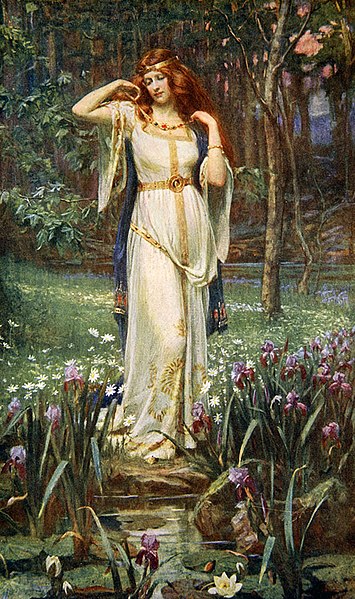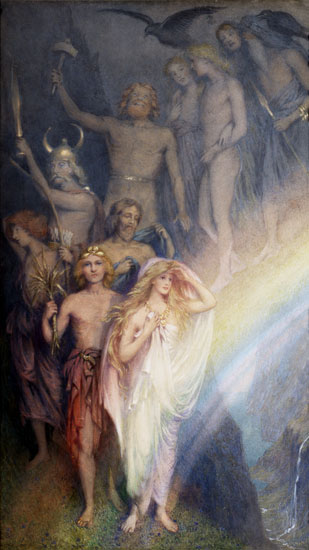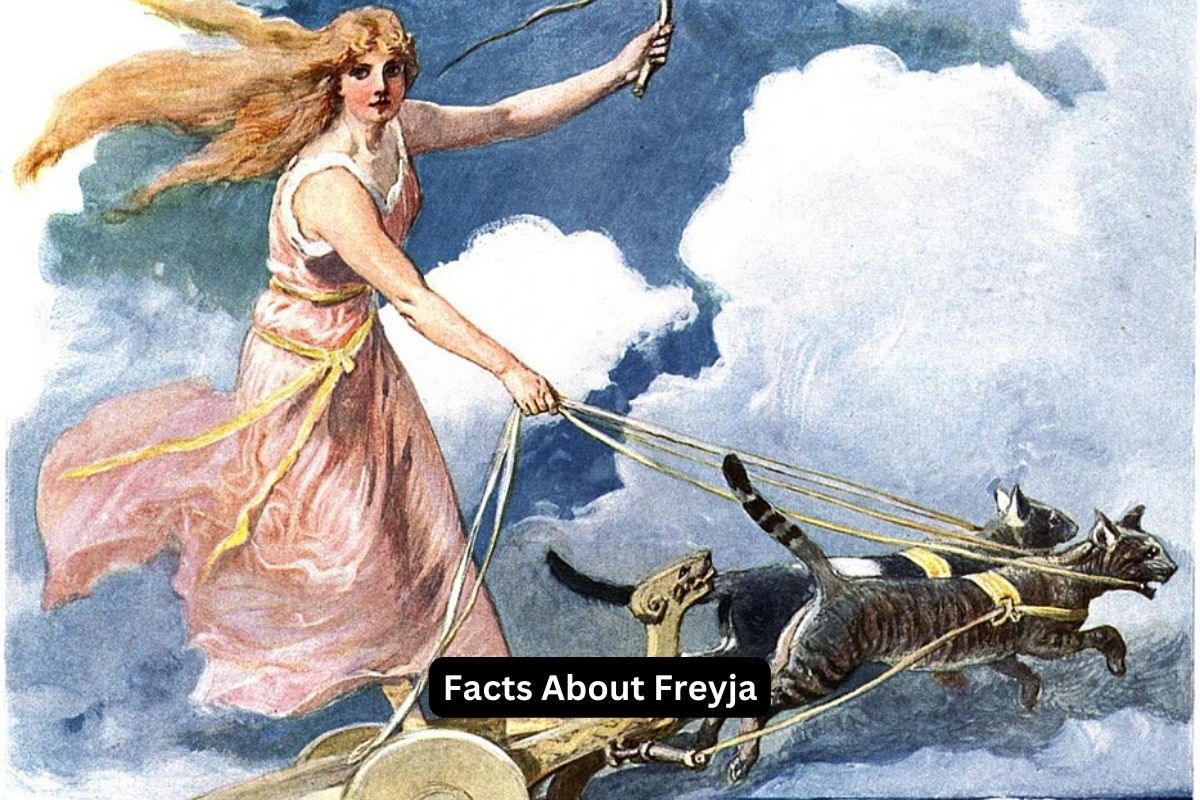Freyja is a captivating and multifaceted figure in Viking mythology. As a prominent goddess in Norse belief, she is celebrated as the goddess of love, beauty, fertility, and war.
Her compelling character encompasses both the tender aspects of romance and the fierce nature of battle, making her a cherished and influential deity in Viking culture.
Freyja’s associations with powerful symbols, such as her falcon feather cloak, cat-drawn chariot, and the legendary Brísingamen necklace, highlight her complex role in shaping the destinies of warriors and lovers alike.
Her enduring presence in Viking mythology reflects the duality of human experiences and the profound impact of her divine influence on the lives of the ancient Norse people.
Freyja Facts
1. Goddess of Love and Beauty
Freyja is renowned in Norse mythology as the goddess of love and beauty. She is often depicted as the embodiment of feminine sensuality, charm, and allure.
Also Read: Facts About Thor the Norse God
Her beauty and attractiveness are central to her character, and she symbolizes the ideal of love and desire in Norse culture.
Freyja’s association with love also extends to fertility and romantic love, making her a cherished figure among the Norse people.

2. Member of the Vanir, a group of Norse gods
Freyja belongs to the Vanir, one of the two primary groups of gods in Norse mythology. The Vanir are associated with nature, fertility, and the wild aspects of the world.
Also Read: Odin Facts
Freyja’s connection to the Vanir underscores her role as a goddess of fertility and the bounties of nature. This group of gods is distinct from the Aesir, who are more closely tied to war and governance.
3. Twin sister of Freyr
Freyja is the twin sister of Freyr, another significant deity in Norse mythology. Both Freyja and Freyr are the children of the sea god Njord. Freyr is known for his association with peace, prosperity, and abundance, particularly in the form of a successful harvest.
Their close relationship as siblings highlights the importance of fertility and nature in Norse culture, as both deities play essential roles in ensuring the well-being of the land and its people.
4. Possesses a falcon feather cloak
Freyja possesses a remarkable cloak made of falcon feathers. This magical garment allows her to transform into a falcon at will. This power of transformation is not only a symbol of her connection to nature but also a practical tool for her various adventures and journeys.
The falcon cloak is one of Freyja’s distinctive attributes, emphasizing her link to the animal world and her ability to move between realms.
5. Rides a chariot pulled by cats
Freyja is often depicted riding a chariot pulled by two enormous cats. These cats, often described as large and powerful, are a unique symbol of her authority and her dominion over the realms she traverses.
The choice of cats is intriguing because they represent both grace and ferocity, mirroring Freyja’s multifaceted character, which combines beauty and strength.
6. Goddess of war and death
In addition to her associations with love and beauty, Freyja is a goddess of war and death.
This aspect of her character is exemplified by her role in choosing half of the warriors who die in battle to reside in her hall, Sessrúmnir, in the afterlife. This hall is said to be located in the realm of Folkvang, where Freyja holds sway.
Her connection to the fallen warriors underscores her role as a warrior’s protector and her ability to usher them into the afterlife, making her a respected and formidable deity among warriors in Norse mythology.

7. Queen of the Valkyries
Freyja is sometimes regarded as the queen of the Valkyries, a group of warrior maidens in Norse mythology. Valkyries serve Odin, the chief of the Aesir, and their primary role is to select which fallen warriors are worthy to enter Valhalla, the hall of the slain.
Freyja’s connection to the Valkyries underscores her influence over matters of war and the afterlife. As their queen, she holds a position of authority and plays a pivotal role in the fate of fallen heroes.
8. Owner of the Brísingamen necklace
Freyja is renowned for owning a magnificent necklace called the Brísingamen. This exquisite piece of jewelry was crafted by dwarves and is considered one of the most valuable treasures in Norse mythology.
The Brísingamen is often associated with Freyja’s beauty and power, emphasizing her status as a goddess of love and desire. The acquisition of the necklace is a story of cunning and resourcefulness, reflecting Freyja’s intelligence and determination.
9. Associated with cats and boars
Freyja’s association with cats and boars is significant in Norse mythology. Cats are often depicted as her companions and are linked to her chariot, emphasizing her command over these powerful and independent creatures.
Boars, on the other hand, symbolize her connection to fertility and the untamed aspects of nature. These symbols reflect her multifaceted nature as both a goddess of love and a fierce warrior.
10. Her tears are said to turn into amber
According to some Norse myths, Freyja’s tears are believed to transform into gold when they touch the earth. This transformation is thought to be the origin of amber, a precious and valuable gemstone in Norse culture.
Amber was highly prized for its beauty and rarity, and Freyja’s tears turning into this substance further cements her association with beauty and wealth.
